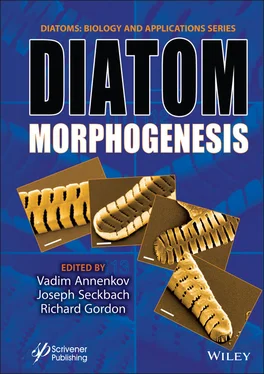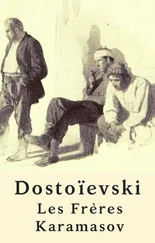Diatom Morphogenesis
Здесь есть возможность читать онлайн «Diatom Morphogenesis» — ознакомительный отрывок электронной книги совершенно бесплатно, а после прочтения отрывка купить полную версию. В некоторых случаях можно слушать аудио, скачать через торрент в формате fb2 и присутствует краткое содержание. Жанр: unrecognised, на английском языке. Описание произведения, (предисловие) а так же отзывы посетителей доступны на портале библиотеки ЛибКат.
- Название:Diatom Morphogenesis
- Автор:
- Жанр:
- Год:неизвестен
- ISBN:нет данных
- Рейтинг книги:5 / 5. Голосов: 1
-
Избранное:Добавить в избранное
- Отзывы:
-
Ваша оценка:
- 100
- 1
- 2
- 3
- 4
- 5
Diatom Morphogenesis: краткое содержание, описание и аннотация
Предлагаем к чтению аннотацию, описание, краткое содержание или предисловие (зависит от того, что написал сам автор книги «Diatom Morphogenesis»). Если вы не нашли необходимую информацию о книге — напишите в комментариях, мы постараемся отыскать её.
A unique book presenting the range of silica structures formed by diatoms, theories and hypotheses of how they are made, and applications to nanotechnology by use or imitation of diatom morphogenesis.
Audience
Diatom Morphogenesis — читать онлайн ознакомительный отрывок
Ниже представлен текст книги, разбитый по страницам. Система сохранения места последней прочитанной страницы, позволяет с удобством читать онлайн бесплатно книгу «Diatom Morphogenesis», без необходимости каждый раз заново искать на чём Вы остановились. Поставьте закладку, и сможете в любой момент перейти на страницу, на которой закончили чтение.
Интервал:
Закладка:
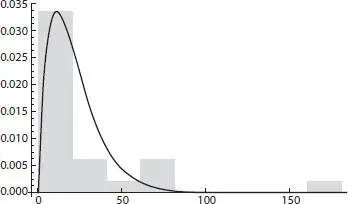
Figure 2.20Valve formation steps for eight taxa as a probability density function of entropy values resulting in a gamma distribution.
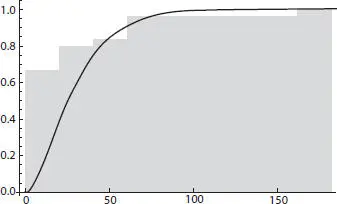
Figure 2.21Valve formation steps for eight taxa as a cumulative density function of entropy values.
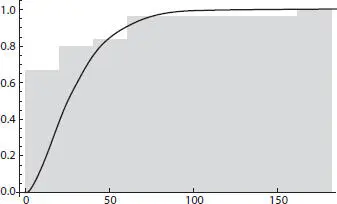
Figure 2.22Valve formation steps for eight taxa as a skew-right normal prior probability density function of entropy values.
Table 2.2 Valve formation simulation for eight centric diatom taxa and characterization of instability and stability from Lyapunov exponents. Positive sums indicate chaotic instability, negative sums indicate stability, and Lyapunov exponents from Kolmogorov-Sinai (KS) entropy indicate random instability.
| Taxon* | File name | Chaotic Instability: Sum of + Lyapunov exponents | Stability: Sum of - Lyapunov exponents | Random Instability: Lyapunov exponent from K-S entropy |
| Actinoptychus senarius | motewx1500_2 | 5.0775 | -429.424 | 4399.39 |
| Actinoptychus splendens | MisBy5_1hx2000 | 4.987 | -388.348 | 3079.95 |
| Arachnoidiscus ehrenbergii (forming valve) | halfmax500 | 4.96527 | -390.747 | 3186.1 |
| Arachnoidiscus ehrenbergii (1) | provbay5_12ix400 | 5.36916 | -379.328 | 2359.42 |
| Arachnoidiscus ehrenbergii (2) | ProvBay5_12lx450 | 5.04099 | -398.893 | 4656.9 |
| Arachnoidiscus ornatus | PoiDumox700 | 5.18264 | -454.589 | 2669.33 |
| Asterolampra marylandica | SanDBay02_03dx1100 | 5.15695 | -383.425 | 3354.2 |
| Aulacodiscus oregonus | PoiDumjx600www | 5.1158 | -424.086 | 4033.01 |
| Coscinodiscus sp. | MisBayhx500 | 5.00421 | -465.124 | 3277.96 |
| Cyclotella meneghiniana + | SClemtbx1800 | 5.09775 | -422.176 | 2448.34 |
*All taxa are external valves unless otherwise noted.
+Symmetry value is the average of all rotations test results.
The results for external valves was somewhat different from those for all valves combined. Average symmetry per taxon revealed that most of the triangular taxa or those with three-part valve features were the least symmetric in contrast to the most symmetric taxa, including species from Aulacodiscus , taxa with four-part valve features or shape, Glyphodiscus stellatus, Eupodiscus radiatus, Amphitetras antediluviana , and Triceratium pentacrinus fo. quadrata). Actinoptychus senarius, Spatangidium arachne, Asterolampra marylandica, Arachnoidiscus ehrenbergii , and Arachnoidiscus ornatus were notable exceptions to the four-part rule in the highly symmetric group (Figure 2.13). As expected, species of Asteromphalus were nearer in symmetry to Asterolampra grevillei and less symmetric than Asterolampra marylandica . Although, fewer taxa were analyzed with respect to forming valves, a similar result emerged when compared to external valves. Four-part valve or greater featured or shaped taxa were the most symmetric (Figure 2.14). Taxa with higher forming than external valve symmetry were Triceratium favus and Triceratium pentacrinus fo. quadrata (Figure 2.14). Different species of Asteromphalus forming valves were found to be similar in symmetry to those of Asterolampra marylandica , contrary to the situation with external valves.

Figure 2.23Valve formation simulation comparison of symmetry and chaotic instability. See Table 2.2for numerical values.
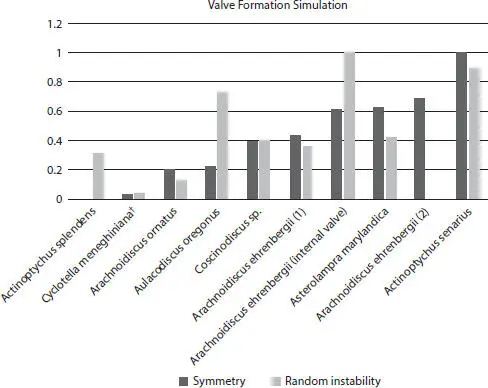
Figure 2.24Valve formation simulation comparison of symmetry and random instability. See Table 2.2for numerical values.
A comparison of symmetric and asymmetric external valve surfaces resulted in higher symmetry for Arachnoidiscus and Aulacodiscus over Asteromphalus (Figure 2.15). Steeper slopes for the symmetric genera of 1.276 and 2.2925 also indicate more symmetry change among species than Asteromphalus species with a slope of 1.1878. Generally, rotationally asymmetric diatom surfaces exhibit less symmetry than morphologically similar taxa such as Asterolampra marylandica (Figure 2.13). However, asymmetric surfaced Spatangidium arachne has higher symmetry than Asteromphalus species (Figure 2.13). The five rays of Spatangidium arachne are thin, straight and regularly spaced and sized, which may be recovered as more dihedrally symmetric than Asteromphalus species which are more variable in these surface features [2.146].
Normal and abnormal valves for Cyclotella meneghiniana were compared in terms of symmetry (Figure 2.16). Normal valves had a steeper slope than abnormal valves, indicating a greater change in symmetry. That is, abnormal valves have less symmetry or greater asymmetry than normal valves of Cyclotella meneghiniana .
Initial valves were compared to normal vegetative valves of Cyclotella meneghiniana . The average symmetry of the initial valves was much higher than average symmetry for external and forming vegetative valves (Figure 2.17). The difference in symmetry of the central area was the key to the difference between initial and vegetative valves. The undulated central area of the vegetative valve has less symmetry than the symmetry of the more uniform convex shape in initial valves.
In the valve formation simulation, least symmetric taxa ranged from Actinoptychus splendens to the highest symmetric taxon, Actinoptychus senarius (Figures 2.23 and 2.24). The more distinct and regular the valve surfaces features were present, the more symmetric was the taxon. Less symmetric taxa had the highest chaotic and random instability (Figures 2.23 and 2.24). This relation between asymmetry and instability is supported for other organisms [2.54]. The main difference in our analysis is that the sources of instability are different for different degrees of symmetry.
2.4.1 Symmetry and Scale in Diatoms
Symmetry in diatoms is a characteristic of morphology that is evident at various scales. Discrete or continuous symmetry [2.167] as well as local or global symmetry are issues of scale. In our study, we used discrete measures at a local scale. Symmetry may be scale dependent over the 3D morphology of the organism. For different structural parts, e.g., honeycomb, repeating hexagonal pores in layers [2.138], of the diatom valve, there may be a hierarchical cumulative symmetry of morphological characters at the nano to micro to macro scale, across the valve face as a result of epigenesis with respect to morphogenesis, differentiation, and growth [2.32]. Hierarchical cumulative symmetry may also change from organelle to the whole diatom cell as a result of cytokinesis and mitosis with respect to morphogenesis. At the 3D surface and boundary shape of the cell, diatoms have structural symmetry changes at each developmental stage as each subsequent whole daughter cell undergoes size diminution, auxosporulation, and production of an initial cell. Our focus on centric diatom vegetative cells and valve formation as well as vegetative and initial cell symmetry was used in assessing symmetry during diatom morphogenesis.
Читать дальшеИнтервал:
Закладка:
Похожие книги на «Diatom Morphogenesis»
Представляем Вашему вниманию похожие книги на «Diatom Morphogenesis» списком для выбора. Мы отобрали схожую по названию и смыслу литературу в надежде предоставить читателям больше вариантов отыскать новые, интересные, ещё непрочитанные произведения.
Обсуждение, отзывы о книге «Diatom Morphogenesis» и просто собственные мнения читателей. Оставьте ваши комментарии, напишите, что Вы думаете о произведении, его смысле или главных героях. Укажите что конкретно понравилось, а что нет, и почему Вы так считаете.
